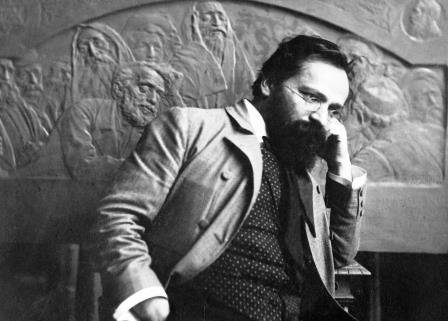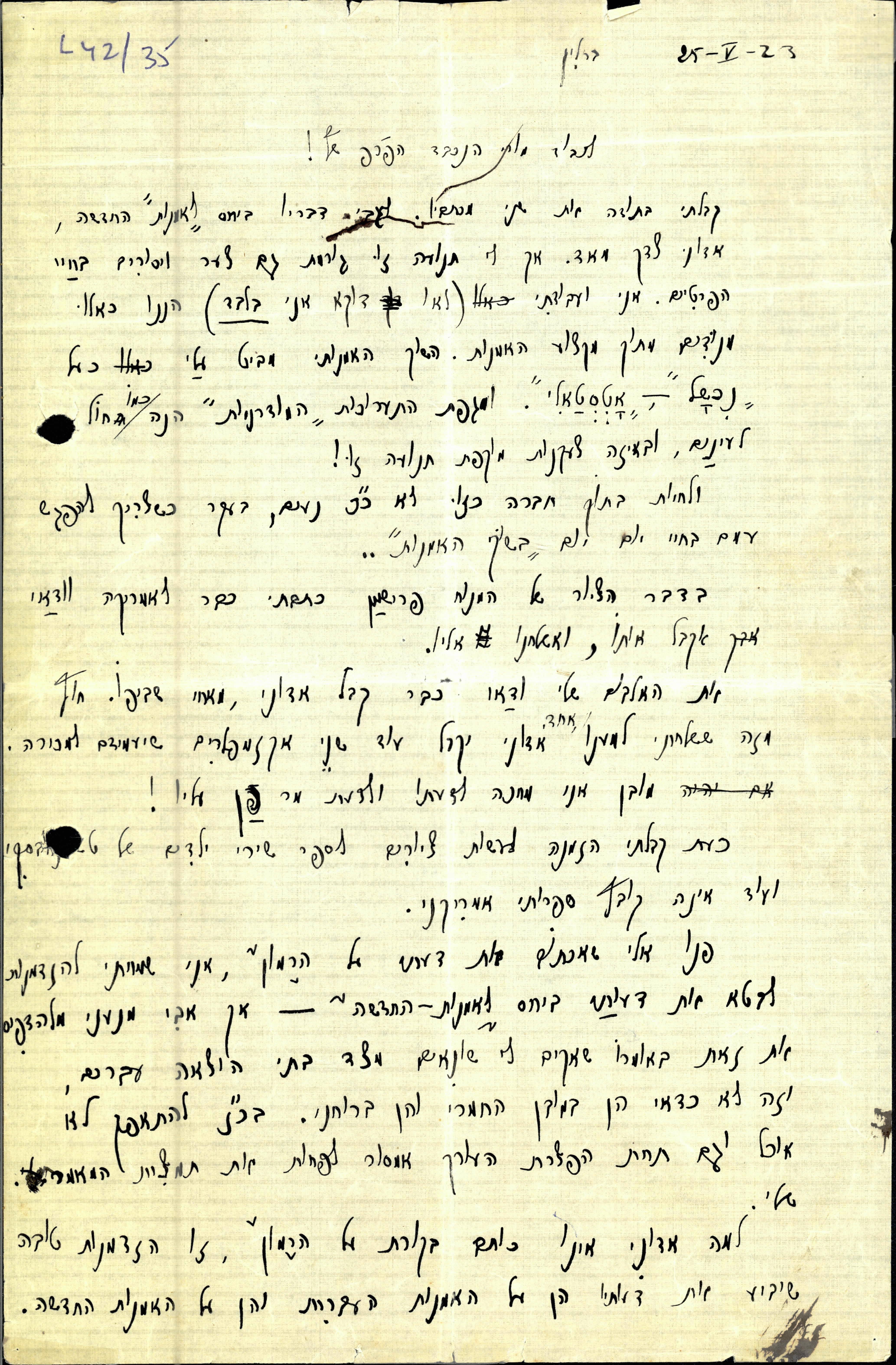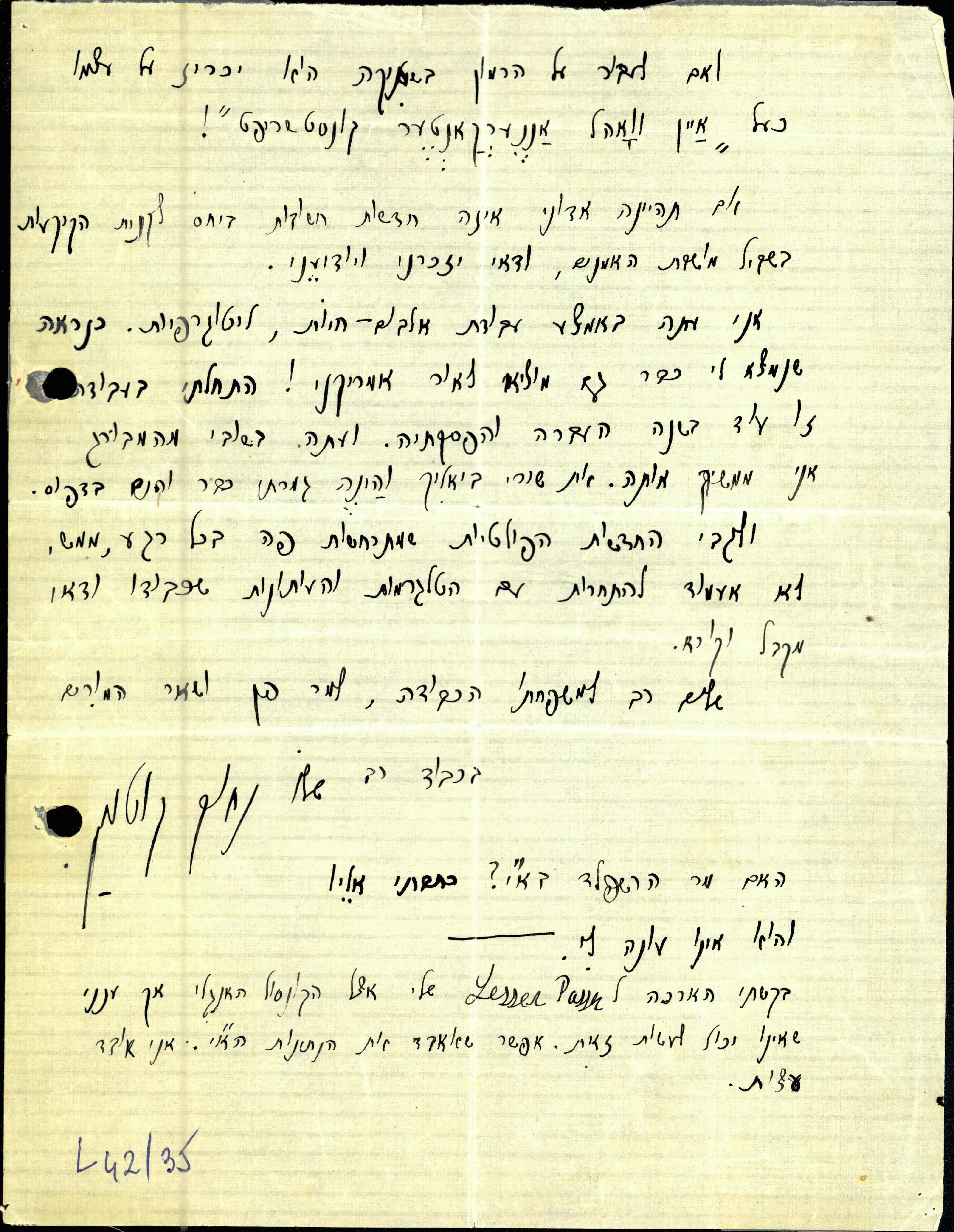This year marks the 110th anniversary of the founding of the Bezalel Arts Academy. We took the opportunity to look into the files of the Bezalel archive that is kept in the CZA in order to tell the tale of the early years of the school.
The story begins in 1903, in Vienna. Two men,

one Theodor Herzl and Boris Schatz, met for coffee and strudel in one of the cafes of the city. Schatz, born in Kaunas, Lithuania, was already a successful artist at the time. His sculptures gained him a name in Europe. They also gained him the post of the royal sculptor in the court of the Bulgarian king. Schatz wanted for neither money nor fame. But the regal sculpture had a dream that prevented him from resting on his laurels. In his vision he saw the land of Israel, that dusty, turbulent piece of land, as a center of the arts, a melting pot that will fuse together the sublime arts of Europe with the oriental spirit of the Levant. Herzl, a man that could appreciate visions that hovered on the verge of impossibility, liked what he heard. In 1905, the year of the 7
th Zionist congress, Schatz's partner for strudel and vision was no longer among the living, but the congress decided to except his idea and support the school. A few months later Schatz arrived in Palestine with the photographer and printmaker Ephraim Moshe Lilian and a handful of students, rented a house on Ethiopia street in Jerusalem, and the Bezalel arts academy was on its way. In a mere two years that house proved toO small to contain Schatz's expanding vision, and the young school was moved to a bigger house in Shmuel Hanagid street, to a building that was supposed to be an orphanage, but became the place of birth of the visual arts of the land of Israel.
The first years of the school knew many ups and downs. The house on Shmuel Hanagid street, with its beautiful garden and the bustling creativity of its inhabitants, was a cultural center. It housed exhibitions, lectures and shows that were open to the public. But these were also hard times, as the letter before you shows. In the letter, from 1917, Schatz pleads the American consul in Jerusalem to aid the school, because the students are on the brink of starvation.
On that same year the school was closed for a year because the Turks deported Schatz to Damascus, as part of their policy to exile heads of the Jewish Yishuv outside of Palestine. The school opened again a year later, and Schatz returned to Jerusalem in 1919. The hardships persisted after the war. Mordechai Narkis, one of the first and known students of the school and later the manager of the Bezalel museum, said that Schatz did every chore, big as small, in order to keep his dream on track. One evening, as he was entering the school at a late hour, Narkis saw the former sculptor of the Bulgarian court mopping the floor himself.
During the 20s, the school stood in the heart of a heated artistic confrontation. Modern artists saw the school as an agent of the old guard, out of touch with new artistic trends and movements. An expression to the can be seen in a letter to Schatz from one of his most famous students, Nahum Gutman, in which the painter laments being treated as outdated, and irrelevant:


In 1929 the school was closed. It reopened in 1935, but Schatz did not get to see his dream come back to life and flourish. He died in 1932 during a fundraising campaign in the United States.n 1929 the school was closed. It reopened in 1935, but Schatz did not get to see his dream come back to life and flourish. He died in 1932 during a fundraising campaign in the United States.n 1929 the school was closed. It reopened in 1935, but Schatz did not get to see his dream come back to life and flourish. He died in 1932 during a fundraising campaign in the United States.n 1929 the school was closed. It reopened in 1935, but Schatz did not get to see his dream come back to life and flourish. He died in 1932 during a fundraising campaign in the United States.
Despite the hardships, the early Years of Bezalel were those in which the school established its position as a leading institution in Israeli visual arts. The orientalist iconographic trends of the Bezalel body of work of the time can be seen as the visual expression, embodiment even, of the Zionist project that sought to collect the Jews from around the world, and reconnect them with the orient.
The Bezalel archives includes various administrative documents, letters, and art works of students that attended the school in its early years. it documents the emergence of one of the most important institutions of Israeli art today.
An academic timetable. Among various art courses, the students also took bible studies and Hebrew literature:
Student list, listing, among other things, the students' communal affiliation:
Art work by early students.